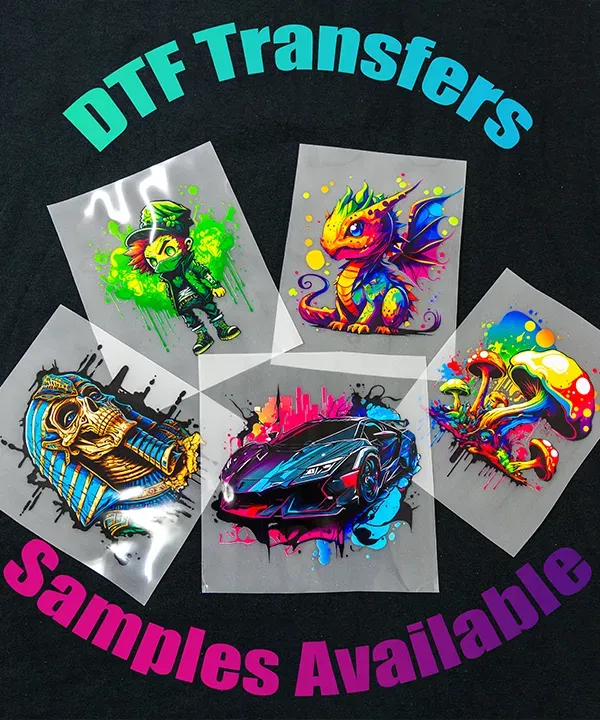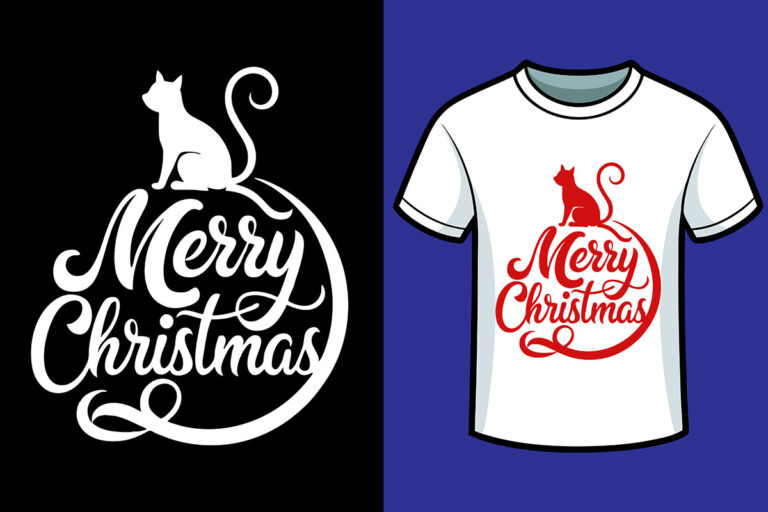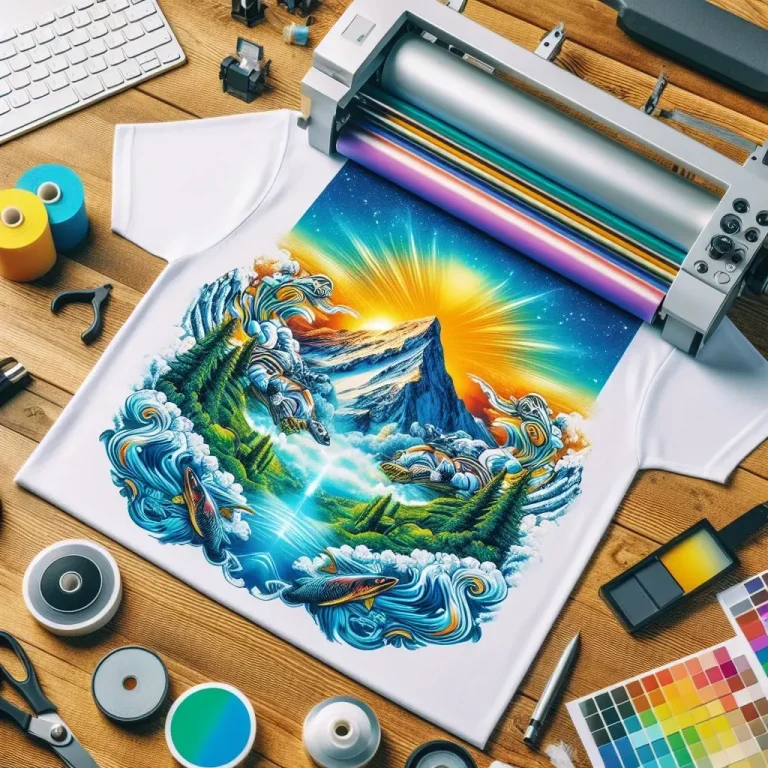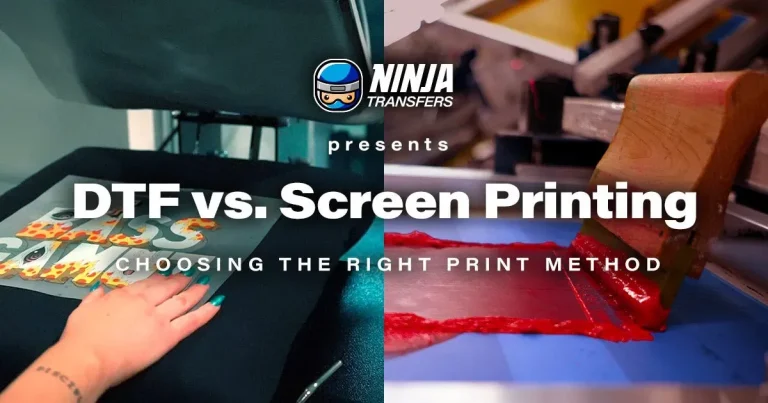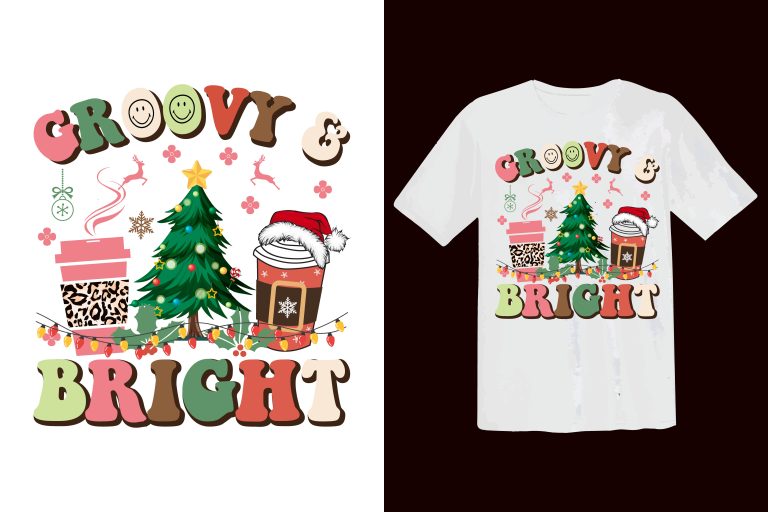DTF Transfers: The Ultimate Guide to Everything You Need
DTF transfers, or Direct to Film transfers, have emerged as a game-changer in the world of custom garment printing. This innovative technique offers a unique method for transferring vibrant and intricate designs onto various fabrics, making it a popular choice for both small business owners and DIY hobbyists. Understanding what DTF transfers entail not only allows you to leverage their potential but also helps you appreciate the benefits of DTF printing, including its quick turnaround and versatility across materials. In this guide, we will delve into the DTF printing process, compare DTF vs DTG printing, and explore the wide array of DTF transfer applications. Prepare to unlock the secrets of this dynamic printing method that is transforming how we decorate textiles.
Also referred to as Direct to Film printing, the DTF transfer process presents a contemporary approach to fabric decoration. This method utilizes a specialized film to transfer intricate designs onto a multitude of textile surfaces, making it a highly sought-after option for personalized apparel and promotional merchandise. When considering the benefits of DTF printing, one can readily note its impressive color vibrancy and efficiency in production—qualities that significantly enhance the customization experience. This guide will unravel the mechanics of the DTF printing process and its applications, while also highlighting its advantages over traditional techniques like DTG printing. Embrace the versatility and creativity that DTF transfers bring to the garment industry as we explore this trend further.
The Basics: What Are DTF Transfers?
DTF transfers, or Direct to Film transfers, represent a cutting-edge technique in the realm of textile printing. By printing designs onto a specialized film, this method allows for the creation of high-quality images that maintain color vibrancy and detail when transferred onto fabrics. After the printing process, powdered adhesive is used to ensure that the design adheres firmly to the fabric during heat application. Unlike traditional methods, this process accommodates a wide range of materials, making it suitable for various garment types.
The significance of DTF transfers lies not only in their versatility but also in their efficiency in producing stunning designs. This process circumvents some limitations of other printing techniques, especially Direct to Garment (DTG) printing, which typically requires specific fabric types, primarily cotton. DTF transfers, by contrast, excel on a multitude of fabrics, from polyester to blends, making them an ideal choice for businesses aiming to diversify their product offerings.
Benefits of DTF Printing: Why Choose This Method?
DTF printing has rapidly emerged as a favored choice for businesses focusing on garment decoration, primarily due to its impressive benefits. One of the standout advantages is the vibrant color output which DTF transfers can achieve. With no need for an underbase, designs can shine brightly on dark fabrics, offering depth and detail that sets them apart from conventional printing methods. This capability empowers designers and businesses to create more impactful visual statements on their products.
Moreover, efficiency is a hallmark of DTF printing. Smaller production runs are not only feasible but economical with this technique, allowing businesses to offer custom designs without the extensive setups required in screen printing. This makes DTF the ideal solution for businesses looking to minimize costs while maximizing versatility, particularly as consumer demand for unique and personalized apparel continues to rise.
The DTF Printing Process: Step-by-Step Breakdown
Understanding the DTF printing process is crucial for anyone looking to harness its capabilities effectively. The procedure begins with a design being printed onto a specialized film using a DTF printer, which employs a high-quality ink system. After this initial step, powdered adhesive is immediately applied to the wet ink and heated to ensure a strong bond forms between the two elements. This process is essential for achieving longevity in the final product.
Once the adhesive is set, the film is cooled and ready for application onto the fabric. The transfer is then executed using a heat press, which activates the adhesive, bonding the design to the garment. This meticulous process ensures that designs not only look great but also withstand regular wear and washing, providing an edge over other printing techniques that often struggle with durability.
DTF vs DTG Printing: Which is Right for You?
When deciding between DTF and DTG printing methods, several factors should weigh into the decision. Direct to Garment printing shines with complex designs on cotton materials, providing unmatched detail and softness. However, DTF transfers offer wider applicability, working effectively with various fabric types including polyester and blends, which are becoming increasingly popular in fashion.
Additionally, DTF transfers can be more cost-effective for smaller orders and quicker turnaround times, making it ideal for small businesses or custom projects. Understanding these differences helps businesses choose the right method that aligns with their production capabilities and customer demands.
Applications of DTF Transfers: Where Can You Use Them?
The versatility of DTF transfers opens the door to a wide array of applications in the garment industry. From fashion designers looking to create eye-catching apparel to businesses in need of promotional products, DTF printing offers a solution that caters to various market segments. Custom t-shirts, workwear, and specialty items can all benefit from this advanced printing technique, allowing for tailored designs that resonate with target audiences.
Moreover, DTF transfers are particularly valuable for creating customized merchandise, such as family reunion shirts or personalized gifts. This adaptability to individual customer needs not only enhances customer satisfaction but also strengthens brand loyalty as consumers increasingly seek unique and expressive products.
Future Trends in DTF Printing: What Lies Ahead?
As the DTF printing market continues to expand, several trends are emerging that hint at its future trajectory. Innovations in ink technology are likely to pave the way for even higher quality prints and reduced production times. These advancements will enable small to mid-sized businesses to compete more effectively with larger firms, democratizing access to high-quality printing solutions.
Moreover, the growing trend towards customization will increasingly drive demand for DTF transfers. As brands strive to connect more personally with consumers, the ability to produce personalized items at scale will become increasingly relevant. Keeping an eye on these trends will help businesses stay ahead in an ever-evolving market characterized by rapid technological advancements and shifting consumer preferences.
Frequently Asked Questions
What are DTF transfers and how do they work?
DTF transfers, or Direct to Film transfers, involve printing designs onto a specialized film using a DTF printer. Once the design is printed, a powder adhesive is applied, heated to bind, and after cooling, it can be transferred onto fabric with a heat press. This method allows for vibrant prints on various fabric types.
What are the benefits of DTF printing compared to other printing methods?
The benefits of DTF printing include vibrant color reproduction, high-resolution detail, and compatibility with a variety of fabrics including cotton and polyester. DTF transfers also offer quick production times and economical small runs, making them ideal for businesses and custom orders.
Can you explain the DTF printing process in detail?
The DTF printing process involves printing a design onto a special film, applying a powder adhesive while the ink is wet, and then heat-setting it to adhere the powder. After cooling, the design is transferred to fabric using a heat press, creating a durable print that withstands washes.
How does DTF vs DTG printing compare in terms of versatility?
DTF printing is generally more versatile than DTG (Direct to Garment) printing because it can be applied to a wider range of fabrics, including dark and synthetic materials. While DTG works best on cotton, DTF can print on cotton, polyester, and blends, broadening its application.
What are some common applications for DTF transfers?
Common applications for DTF transfers include fashion garments, promotional merchandise, and customized products. Businesses often use DTF printing to create unique apparel designs, branded merchandise, or personalized items like family reunion shirts.
What challenges do businesses face when using DTF transfers?
Challenges in utilizing DTF transfers include initial investment costs for DTF printers and heat presses, as well as ensuring proper use of adhesive powders for durability. Without effective finishing techniques, prints may peel or fade over time, impacting quality.
| Key Points | Details |
|---|---|
| What Are DTF Transfers? | Printing designs onto a special film using DTF printers; suitable for various fabrics. |
| Advantages of DTF Transfers | Vibrant colors, quick production, compatibility with different fabrics. |
| Challenges of DTF Transfers | High initial equipment costs, need for proper adhesive and finishing techniques. |
| Market Trends | Growing demand for customization and advancements in ink technology. |
| Applications | Fashion, promotional products, customized merchandise. |
Summary
DTF transfers are revolutionizing the textile printing industry by providing an innovative solution for vibrant and intricate garment decoration. This method allows small businesses and DIY enthusiasts to create eye-catching designs with high color vibrancy on a wide range of fabrics, from cotton to polyester. Despite the initial investment in equipment and the necessary techniques for durability, the advantages of DTF transfers, such as quick production times and versatility, make it an increasingly popular choice for apparel decoration. As the market for DTF printing continues to grow, it paves the way for more creative opportunities in customized merchandise and fashion design.

